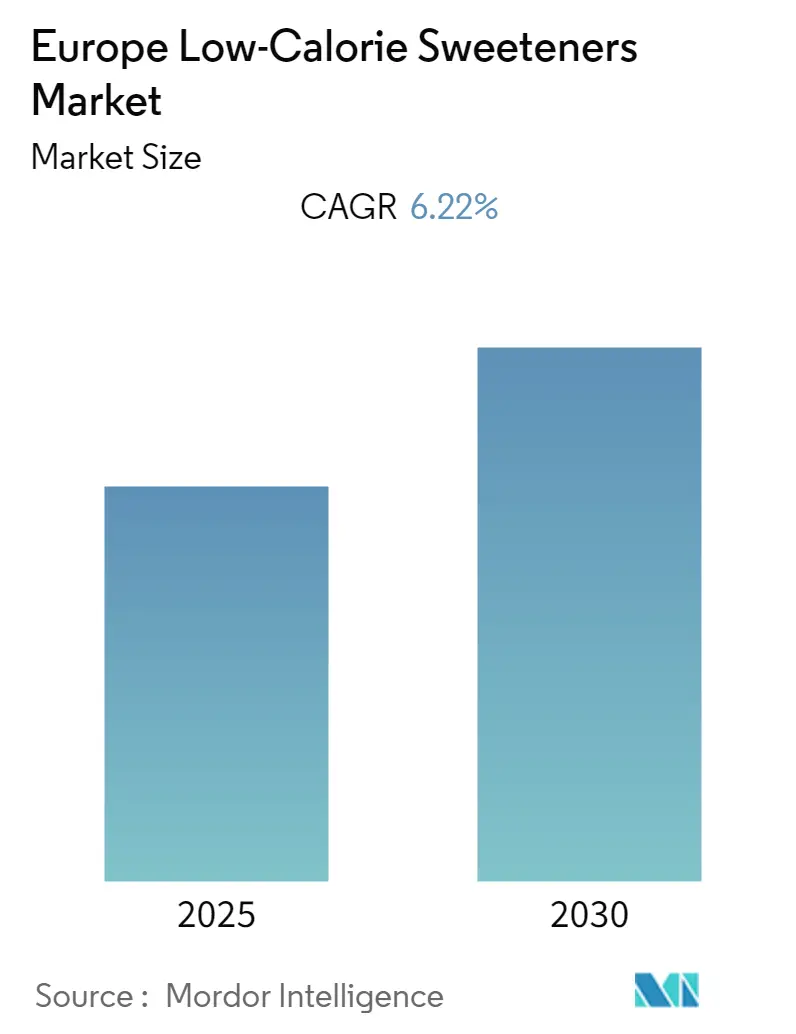
| Study Period | 2019 - 2030 |
| Base Year For Estimation | 2024 |
| Forecast Data Period | 2025 - 2030 |
| Historical Data Period | 2019 - 2023 |
| CAGR | 6.22 % |
| Market Concentration | Low |
Major Players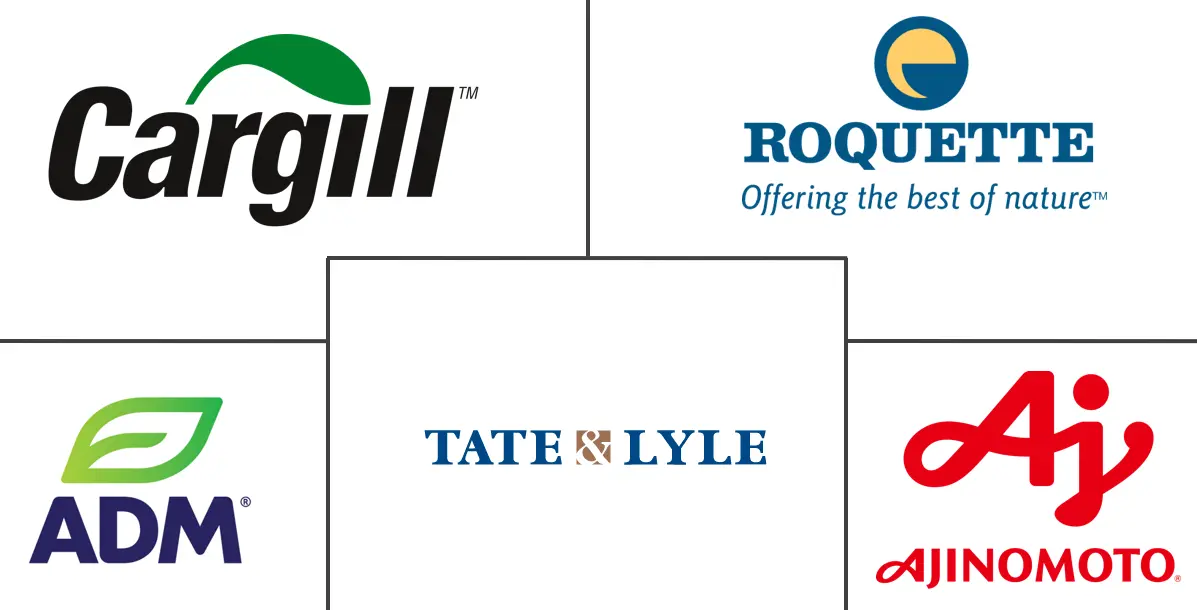
*Disclaimer: Major Players sorted in no particular order |
Europe Low Calorie Sweeteners Market Analysis
The Europe Low-Calorie Sweeteners Market is expected to register a CAGR of 6.22% during the forecast period.
- The rising rate of obesity, diabetes and other health problems in the region which leads to financial strain on healthcare providers of meeting this challenge, thus the consumers of the region are seeking for low-calorie food and other consumable products. Thus, driving the low-calorie sweeteners market.
- In Europe, the regulatory bodies provide provision for growth of the market, thus aiding the local players to enter the market. However, the stringent and changing regulations in Europe may also hamper the market growth in the forecast period.
- Moreover, the rising market in Europe for low-calorie sweeteners has also created immense opportunities for global players to extensively expand their business in the region. Thereby, making expansion as one of the most adopted strategies by the leading players together with product innovation, merger and acquisition, partnership, and others.
Europe Low Calorie Sweeteners Market Trends
The Application in Beverage Segment Drives the Market
Presently, there are eleven low-calorie sweeteners approved for use in soft drinks in Europe such as Acesulfame K, Aspartame, Stevia, Sucralose and others. These low-calorie sweeteners, after attaining government authorization, are widely used in the production of soft drinks. The European soft drink industry has long been involved in a continuous process of removing added sugar from its products and introducing low or zero calories varieties on the market, thus driving the application in the beverage sector. These low-calorie sweeteners are clearly indicated in the labeling of the products according to European food labeling legislation indicated as 'With sweetener(s)' next to the description of the product. Therefore, with the rising consumer knowledge regarding low-calorie sweeteners, the market is witnessing growth.
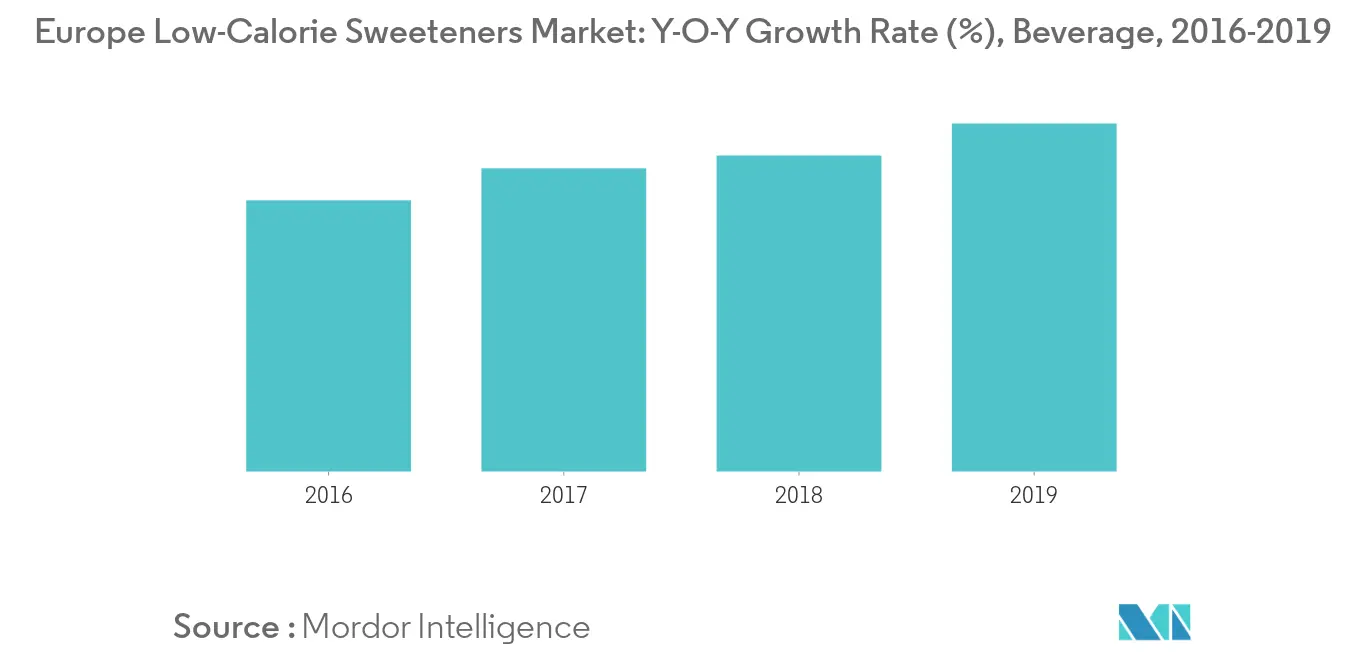
Germany is the Largest Market in the Region
In the European region, Germany is the largest market for low-calorie sweeteners. An increase in the consumption of processed food products coupled with a decline in the consumption of sugar due to the rising health consciousness in the country is boosting the market. The manufacturers operating in the country are undertaking huge amounts of R&D activities, which, in turn, are expanding the production of low-calorie sweeteners in the country. For instance: In June 2018, a Germany-based biotechnology company, c-Lecta, developed a new method (a process based on the enzymatic treatment of precursors of these sweeteners, which makes it possible to convert the precursors into a better-tasting sweetener, efficiently) in partnership with an ingredient supplier to help expand the production of a new plant-based sweetener, i.e., stevia. Moreover, the rising educational efforts by the German food and drink industry is projected to drive the usage in various industries. This is likely to present considerable future opportunities for the manufactures of low-calorie sweeteners in the market.
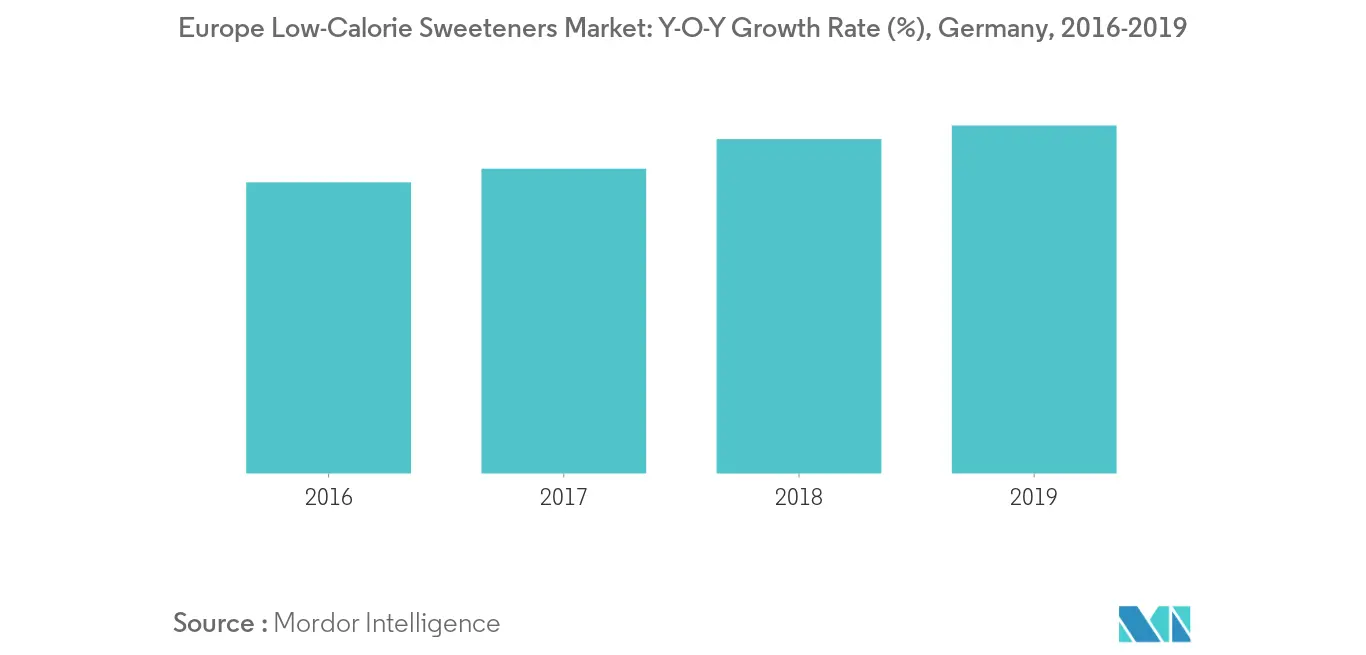
Europe Low Calorie Sweeteners Industry Overview
The Europe low-calorie sweeteners market is highly competitive due to the presence of various international, regional and local players. Key players in the market are Cargill, Archer Daniels Midland Company, Tate & Lyle PLC, Roquette Frères, Ajinomoto, and others. Acquisitions, new product launches, joint ventures, and expansion are the most preferred growth strategies. The key players are focusing on manufacturing natural source of low-calorie sweeteners to match the current trend of the market.
Europe Low Calorie Sweeteners Market Leaders
-
Cargill, Incorporated
-
Tate & Lyle PLC
-
Archer Daniels Midland Company
-
Roquette Frères
-
Ajinomoto Foods Europe SAS
- *Disclaimer: Major Players sorted in no particular order
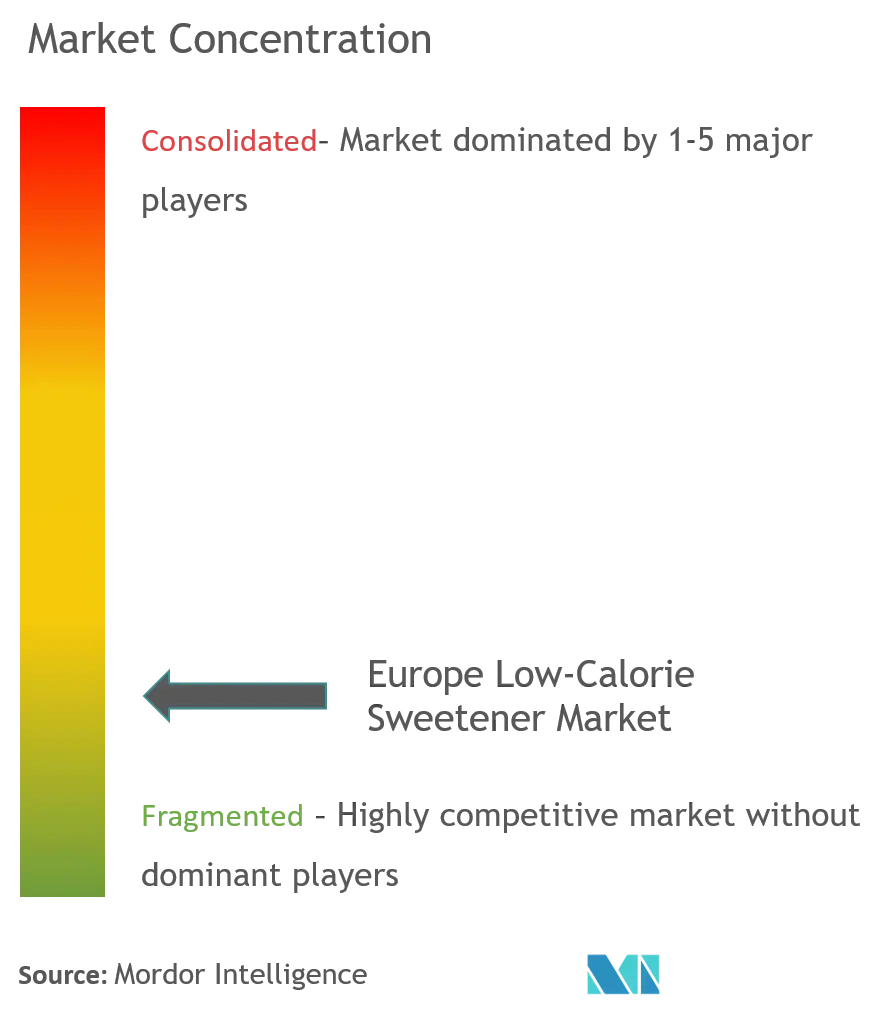
Europe Low Calorie Sweeteners Industry Segmentation
Europe low-calorie sweeteners market is segmented by source, type, application, and geography. Based on the source, the market is segmented into natural and synthetic. Based on product types, the market is segmented into sucralose, saccharin, aspartame, neotame, advantam, acesulfame potassium, stevia, and others. By application, the market is segmented into food, beverage, pharmaceuticals, others. The food segment is further classified into dairy and frozen foods, confectionery, bakery, others. Additionally, on the basis of geography, the study provides an analysis of the low-calorie sweetener market in the emerging and established markets across the region, including the United Kingdom, France, Italy, Spain, Germany, Russia and rest of Europe.
| By Source | Natural | |
| Synthetic | ||
| By Type | Sucralose | |
| Saccharin | ||
| Aspartame | ||
| Neotame | ||
| Advantam | ||
| Acesulfame Potassium | ||
| Stevia | ||
| Others | ||
| By Application | Food | Dairy and Frozen Foods |
| Confectionery | ||
| Bakery | ||
| Others | ||
| By Application | Beverage | |
| Pharmaceuticals | ||
| Others | ||
| Geography | Spain | |
| United Kingdom | ||
| Germany | ||
| Russia | ||
| France | ||
| Italy | ||
| Rest of Europe |
Europe Low Calorie Sweeteners Market Research FAQs
What is the current Europe Low-Calorie Sweeteners Market size?
The Europe Low-Calorie Sweeteners Market is projected to register a CAGR of 6.22% during the forecast period (2025-2030)
Who are the key players in Europe Low-Calorie Sweeteners Market?
Cargill, Incorporated, Tate & Lyle PLC, Archer Daniels Midland Company, Roquette Frères and Ajinomoto Foods Europe SAS are the major companies operating in the Europe Low-Calorie Sweeteners Market.
What years does this Europe Low-Calorie Sweeteners Market cover?
The report covers the Europe Low-Calorie Sweeteners Market historical market size for years: 2019, 2020, 2021, 2022, 2023 and 2024. The report also forecasts the Europe Low-Calorie Sweeteners Market size for years: 2025, 2026, 2027, 2028, 2029 and 2030.
Our Best Selling Reports
Europe Low-Calorie Sweeteners Industry Report
Statistics for the 2025 Europe Low-Calorie Sweeteners market share, size and revenue growth rate, created by Mordor Intelligence™ Industry Reports. Europe Low-Calorie Sweeteners analysis includes a market forecast outlook for 2025 to 2030 and historical overview. Get a sample of this industry analysis as a free report PDF download.




